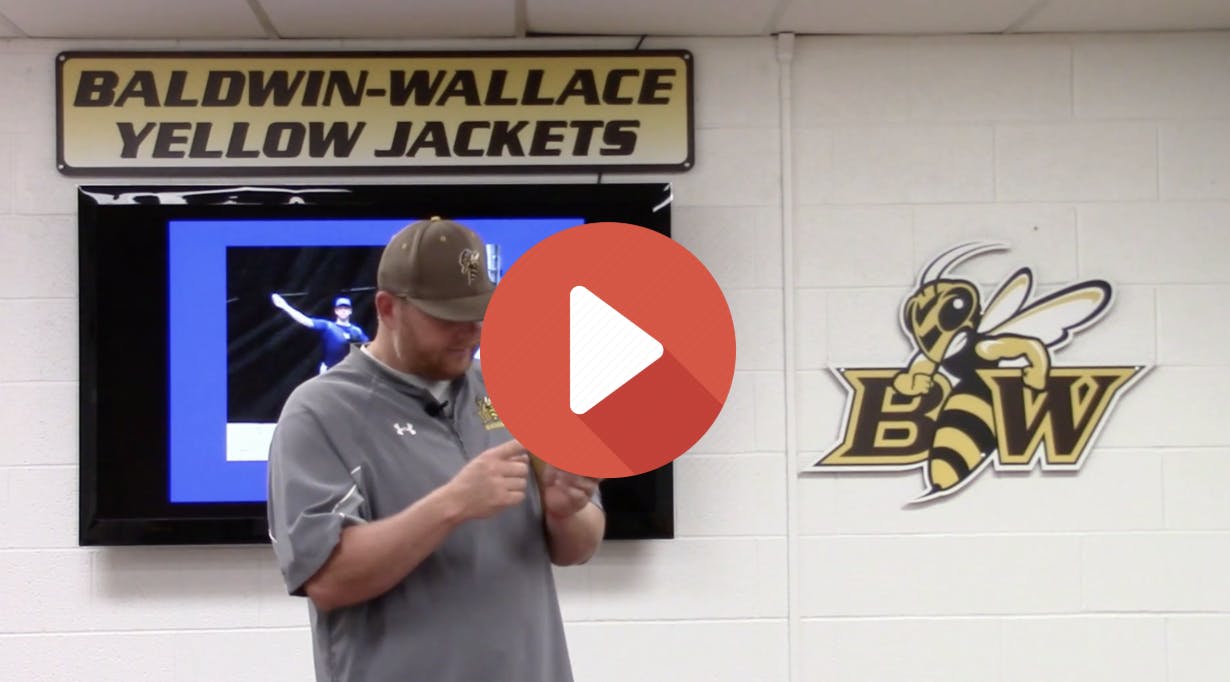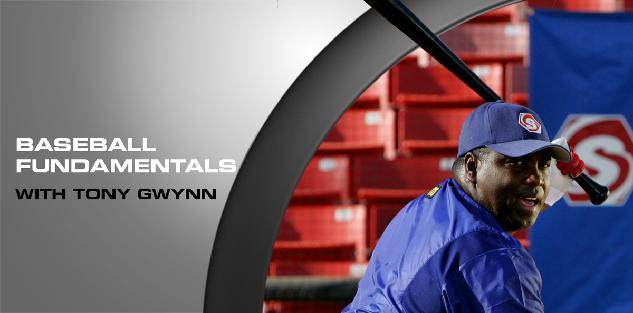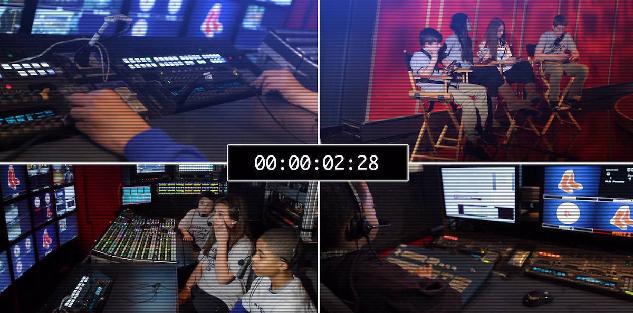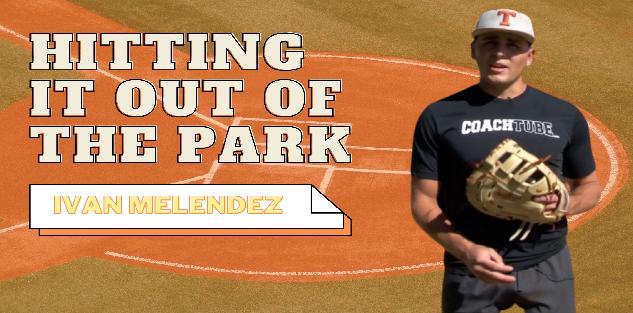Featured courses
- Understanding The Shift by Brandon Ogle
- Two Drills to Improve Outfield Movement and Communication by Grant Young
- The Ultimate Resource For Coaching Youth Baseball by Jackson Chlebowy
- Become a Master at Bunting by Brandon Ogle
- 5 Reasons Why There Is More To Good Base Running Than Just Speed by Brandon Ogle
- Three Injury-Prevention Tips For Your Offseason Pitching Program by Grant Young
- How to Teach Hitting to the Next Generation by Grant Young
- Developing Defensive-Minded Baseball Catchers by Grant Young
- 3 Baserunning Tips to Score More Runs in Baseball by Grant Young
- 5 Outfield Drills to Work on in Season by Alec Burris
- Keys For Scoring More With Runners on First and Third Base by Grant Young
- How to Develop Your Game to Become a Five-Tool Player by Brandon Ogle
- 3 Coaches Share the Keys to Running Baseball Practice the Right Way by Grant Young
- Four Drills to Sharpen a Baseball Hitter’s Vision at the Plate by Grant Young
- Four Quotes to Hit Better With Two-Strikes by Grant Young
- Four of Former MLB Pitcher Juan Nieves’ Movement-Based Pitching Drills by Grant Young
- Two Tips For Developing an Elite Baseball Bullpen by Grant Young
- Overcoming the Four Challenges of Indoor Baseball Practices Because of Weather by Grant Young
- Three Tips to Make Your Baseball Team Mentally Tougher by Grant Young
- Three Priceless Philosophies to Motivate Your Baseball Team by Grant Young
- Three Offseason Baseball Drills to Simulate Competition by Grant Young
- Three Baseball Offseason Strength and Conditioning Essentials by Grant Young
- Important Ways to Improve Your Baseball Team’s Baserunning by Grant Young
- Three Ways to Perfect Hitting Mechanics From an MLB Icon by Grant Young
- Catchers can influence pitchers...for bad or good by Drew Johnson
- Throwing Strikes and Playing Good Defense Equals Wins by Jose Ortiz
- Legendary Indiana Head Baseball Coach Bob Morgan’s Offensive Theory by Grant Young
- Tennessee Head Baseball Coach Tony Vitello on How to Practice Baserunning by Grant Young
- Three Great T-Ball Drills For Youth Baseball Players by Grant Young
- How to Manage a Baseball Pitching Staff by Grant Young
- Three Uncommon Tips to Become a Better Hitter by Grant Young
- How a Baseball Coach Can Develop Strike Throwers by Grant Young
- Drills to Develop Elite Baseball Outfielders by Grant Young
- Baseball Training Exercises to Strengthen Arm and Bat Speed by Grant Young
- How to Use Bunting to Score More Runs by Grant Young
- How To Build An Elite Baseball Infielder by Grant Young
- Three Drills to Improve Your Baseball Team's Infield Play by Grant Young
- Three Keys to Curating a Pitching Staff’s Success by Grant Young
- 3 Techniques to Develop a Baseball Player’s Hitting Approach by Grant Young
- How to Cultivate Confidence Within Your Pitchers by Grant Young
- 5 Every Day Drills To Help You Become A Better Catcher by tyler Linderman
- How to Throw A Curveball by Brandon Ogle
- How to Assemble a Lock-Down Bullpen by Brandon Ogle
- How to Throw a Sinker by Brandon Ogle
- How to be a Smart Baserunner by Brandon Ogle
- Improving a player's slugging average by Phillip Woolgar
- The 8 Fundamentals of Pitching by Drew Johnson
- How to Throw a Deceiving Changeup by Brandon Ogle
- Step Up Your Outfield Defense With These Three Drills by Jose Ortiz
- 8 Baseball Drills Every Player Should Practice by Drew Johnson
- How To Become An Elite Defensive Outfielder by Tyler Linderman
- 5 Tips For Crushing A Curveball by Johnny Grassi
- LEGENDS FOR YOUTH INCLUSION BASEBALL CLINIC by Phil
- Fourteen Ways To Turn A .300 Hitter Into A .210 Hitter by Jay P. Granat, Ph.D.
- How To Become The Ideal Leadoff Man by Brandon Ogle

Four Drills to Sharpen a Baseball Hitter’s Vision at the Plate
- By Grant Young
Baseball season is approaching fast, and improving a baseball hitter's vision and tracking skills is one of the most effective ways to prepare for the upcoming season.
Here are some reasons why focusing on vision and tracking can provide significant benefits:
1. Enhanced Pitch Recognition: One of the key elements of hitting is the ability to recognize different pitch types and their trajectories. By practicing drills that enhance pitch recognition, hitters can improve their ability to anticipate fastballs, curveballs, sliders, and changeups. This leads to better decision-making when it comes to swinging or taking a pitch.
2. Improved Hand-Eye Coordination: Drills that focus on tracking pitches help develop a hitter's hand-eye coordination. This skill is essential for making contact with the ball consistently. By practicing with moving objects—like balls thrown at different speeds and angles—hitters can train their eyes and hands to work in unison, which is vital for successful hitting.
3. Depth Perception Training: Visual depth perception is crucial in determining how far the ball is traveling and its speed. Drills that simulate various game situations, such as tracking pitches from different distances or angles, can help players develop a better sense of depth, allowing them to judge pitch speed and distance more accurately.
4. Focus and Concentration: Maintaining focus during at-bats is essential for success. Vision and tracking drills often require intense concentration and mental engagement. By consistently engaging in these drills during practice, players can enhance their ability to focus during games, minimizing distractions and helping them stay composed under pressure.
5. Game Situational Awareness: Building vision and tracking skills also improves a player’s overall awareness of the game. Hitters who are in tune with the pitcher's mechanics and game scenarios can better assess their situations and make smarter decisions at the plate.
A hitter's success at the plate begins with how well they see the ball and react, making these skills vital to their development. This is why baseball coaches must have several drills and techniques they can use to sharpen their hitters’ vision.
And Brian Harrison could have your perfect solution.
Brian Harrison enters his 15th season as the Head Baseball Coach at Baldwin Wallace University in 2025. The 2019, 2023, and 2024 Ohio Athletic Conference (OAC) Coach of the Year has won 519 career games, including 378 at BW. Harrison has led the Yellow Jackets to the National Collegiate Athletic Association (NCAA) Division III National Tournament on seven occasions, including the school's first-ever trip to the College World Series in 2014 and consecutive appearances in 2022 and 2023.
In his ‘The Complete Hitter’ clinic, Coach Harrison details several drills he has used to improve his hitters’ vision at the plate, which we’ve included for your use below.
Thumbs Drill
One hitting vision drill that Coach Harrison swears by is what he calls the Thumbs Drill. This drill requires no bat, balls, or batting cage, and instead requires a hitter’s complete focus, because this drill is difficult despite seeming somewhat simple.
The hitter will put their two hands together with each hand’s knuckles touching and their thumbs up, all about four inches away from their face. From there, the hitter is supposed to cross their eyes (which Coach Harrison suggests doing by looking at one’s nose) to the point where they can see a third thumb in their vision, which should be positioned in front of the other two thumbs.
Once the hitter can see that third thumb, they’re going to work their hands back and forth in front of their face while still crossing their eyes (and still being able to see that third thumb).
This drill focuses on the two eyes working together, which is crucial for improving vision as a hitter.
Tracking Drills

Coach Harrison goes on to detail three specific drills that he recommends using when it comes to improving a hitter’s ability to track pitches.
The first one involves making dime-sized markings of different colors (ideally red, green, and black) on different points of each baseball they’re going to use for batting practice.
From there, the hitters will step up to the plate against a pitching machine that’s throwing around 95 mph fastballs. They won’t be swinging at these balls, but rather saying out loud which color on the ball they see as it heads toward the plate.
The idea behind this drill is that it will force the player to focus intensely on the color, which will ultimately help them pick up on a ball’s spin once they develop that tracking skill.
Coach Harrison’s next drill is similar, although it’s a bit more difficult than the first drill and requires swinging the bat. The coach who’s throwing batting practice (or a pitching machine can be used) is going to tell the hitter to divide the ball into quadrants (top-left, bottom-left, top-right and bottom-right), and that they should focus on hitting the ball at that specific quadrant with each swing.
This will help the hitter to be more situational in their approach when the game rolls around.
Coach Harrison’s third and final drill in this section is similar to the previous but will start with front toss. Therefore, this is a great drill to start with during a hitting session that’s focused on vision tracking.
With each front toss, the player should be trying to hit the ball on either the outside, middle, or inside part of the ball. This will allow a player to work on their swing and teach their eyes to lead the dance in terms of placing the ball at a certain place on the field while hitting in a game.



